Action Line C8: Culture for a Sustainable Digital Environment
United Nations Educational, Scientific and Cultural Organization (UNESCO)
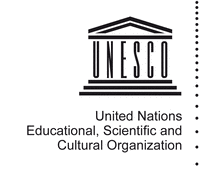
Session 174
How can culture help shape the digital environment and why is it so crucial today, with the advancement of Artificial Intelligence, for ICTs to embrace culture fully?
UNESCO has long advocated and demonstrated that culture, in its diverse manifestations is a driver and enabler of sustainable development. Today, the advancement of Artificial Intelligence highlights that ICTs are having a direct impact on the way cultural expressions are created, disseminated, and accessed, and the way cultural heritage is experienced, safeguarded and shared. This session, hosted by UNESCO on April 8, will highlight how 3-D scanning methods are supporting the rehabilitation of destroyed cultural heritage in post conflict situations, as well as how ICTs can foster cultural entrepreneurship in the cultural and creative industries, notably in developing countries.
From creators gaining wider access in the digital creative field, to 3D virtual renderings and virtual visits of cultural heritage sites and preservation of heritage in historic cities, ICTs as applied to culture continue to break new ground.
This panel discussion will address questions such as:
- In what ways are new 3-D scanning methods supporting the rehabilitation of destroyed cultural heritage in post conflict situations, and allowing communities to restore their pride, identity and history
- How are ICTs fostering cultural entrepreneurship in the cultural and creative industries, notably in developing countries and at the local level?
- How is access to creative content and cultural heritage, through the internet, virtual tours, interactive technology, being expanded to reach wider audiences and have a more inclusive effect, and what challenges remain?
- People drive new development models, creativity and innovation, but what national policies and infrastructure do we need governments to put in place to close the digital divide, foster the diversity of cultural expressions and better enable ICTs to embrace culture fully?
Moderator
Sasha Rubel, Programme Specialist in the Knowledge Societies Division at UNESCO. Prior to coordinating the work of WSIS, the IGF, and the intersectoral task team on AI at UNESCO, Sasha worked in the Culture Sector and in the UNESCO Dakar and Addis Ababa Offices.
Speakers/Panellists
Toussaint Tiendrebeogo, UNESCO, Culture Sector
Toussaint Tiendrebeogo is Head of the Programmes and Stakeholder Outreach Unit - Culture Sector, UNESCO. In this capacity, he is responsible for implementing international cooperation and assistance programmes for the 2005 Convention on the Protection and Promotion of the Diversity of Cultural Expressions, in particular the International Fund for Cultural Diversity. He has a degree in international relations and a Master's degree in cultural industries, specialized in cinema and audiovisual economy. He has more than twenty years of professional experience in the design and implementation of cultural policies, the elaboration of strategies for the development of cultural industries and the building of cooperation networks with professionals, governmental and non-governmental institutions in the cultural sector.
Paul Chaine, Head of Digital Development Department, Palace of Versailles
Paul Chaine graduated in 2003 from the Panthéon-Sorbonne and Panthéon Assas Universities with degrees in management and law, respectively. He then pursued his studies in the USA before becoming the General Secretary for digitalisation at Courrier International (Le Monde group) and Parisien (Amaury group), the latter following the acquisition of the website Paris Etudiant, which he founded in 2000. Since 2015 he has been Head of Digital Development at the Palace of Versailles. He is in charge of all digital systems (websites, mobile applications, etc.) and is involved in their design and the creation of innovative digital content, suitable for all audiences (15 million visitors per year on the websites, community of over 2 million subscribers on social media), thus contributing to the promotion of the Palace of Versailles in France and internationally.
Bastien Varoutsikos, Director of Development, ICONEM
Dr. Bastien Varoutsikos is a cultural heritage specialist, archaeologist, and Director of development for Iconem, a French startup carrying out a large scale program of 3D digitization of heritage at risk around the world. He received his Ph.D. in Anthropology/Archaeology from Harvard University in 2015 and has managed scientific and cultural projects in the Middle East and Central Asia for over a decade. As Jordan Deputy Director then Cultural Heritage Advisor for Turquoise Mountain, he managed the implementation of projects aiming at the documentation and protection of intangible cultural heritage in Afghanistan and Jordan. Overall, his activities have focused on scientific and cultural outreach, intangible heritage documentation methodology and ethics, and cultural project management. Across more than a dozen papers published in peer-reviewed journals or broad audience outlets, he explored the relationship between cultural heritage, politics, media and new technology.
Emo de Medeiros, Independent Artist
Emo de Medeiros (b. 1979) lives and works in Cotonou (Bénin) and in Paris. He studied at Ecole Normale Supérieure (Paris/Ulm), Ecole Nationale Supérieure des Beaux-Arts (Paris), and at the Massachusetts College of Art (MassArt). His work hinges on a single concept he calls contexture, a fusion of the digital and the material, of the tangible and the intangible, exploring hybridizations, interconnections and circulations of forms, traditions, myths and merchandises. It also rests on the new perspectives and conversations happening in a novel space: the current context of the post-colonial, globalized and digitalized world of the early 21st century. The focus of his research encompasses transcultural spaces and the questioning of traditional notions of origin, locus or identity and their mutations through non-linear narratives. Emo de Medeiros' artworks always include a salient conceptual dimension, and are characterized by a participatory and rhythmic approach fusing traditional, technological and semiological elements in transmedia forms. Within his practice, Emo de Medeiros employs an array of media including drawing, sculpture, text, video, photography, assemblage, performance art, electronic music, installations, painting and appliqué fabric. His work has been shown internationally, in France (Centre Pompidou, Palais de Tokyo), in Germany (MARKK Hamburg), Brazil (Videobrasil Contemporary Art Festival São Paulo), Nigeria (LagosPhoto), United Kingdom, Japan, China, in the biennales of Marrakech, Dakar and Casablanca.
Session's link to WSIS Action Lines
-
 C8. Cultural diversity and identity, linguistic diversity and local content
C8. Cultural diversity and identity, linguistic diversity and local content
Session's link to Sustainable Development Process
-
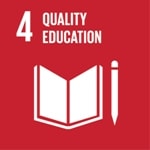 Goal 4: Ensure inclusive and equitable quality education and promote lifelong learning opportunities for all
Goal 4: Ensure inclusive and equitable quality education and promote lifelong learning opportunities for all
-
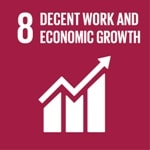 Goal 8: Promote inclusive and sustainable economic growth, employment and decent work for all
Goal 8: Promote inclusive and sustainable economic growth, employment and decent work for all
-
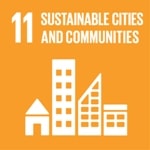 Goal 11: Make cities inclusive, safe, resilient and sustainable
Goal 11: Make cities inclusive, safe, resilient and sustainable
-
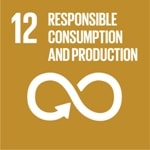 Goal 12: Ensure sustainable consumption and production patterns
Goal 12: Ensure sustainable consumption and production patterns
Culture in the digital environment is responding to global challenges through the exercise of freedom of expression and the promotion cultural diversity (SDG 4). ICTs are progressively incorporated into the cultural and creative sectors in ways that can yield enhanced, inclusive and equitable development outcomes including creating employment and fostering social cohesion (SDG 8, 11 and 12). From creators gaining wider access in the digital creative field, to 3D virtual renderings and virtual visits of cultural heritage sites and preservation of heritage in historic cities, ICTs as applied to culture continue to break new ground.